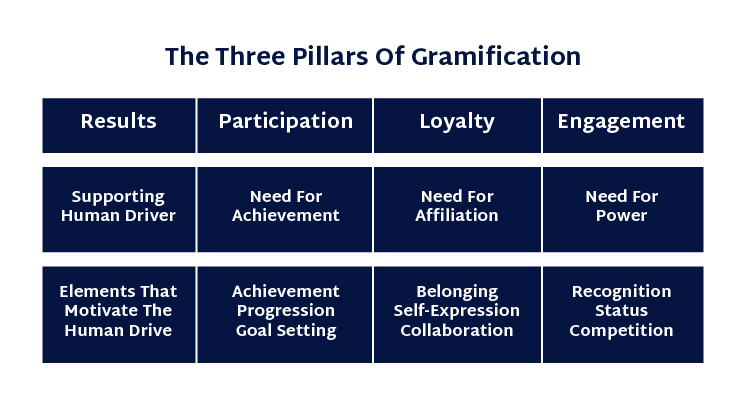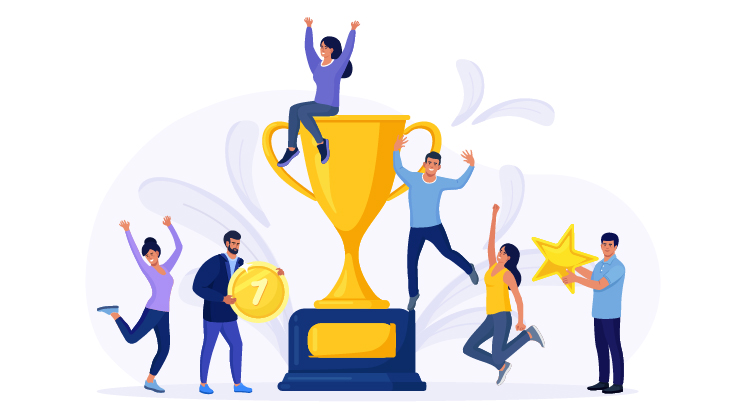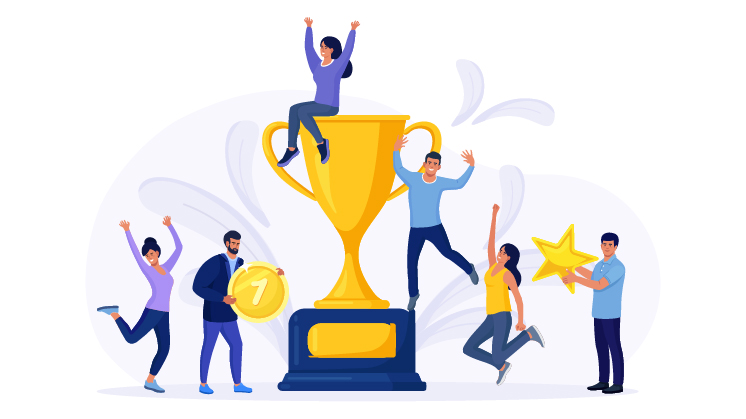Games have a universal appeal, captivating individuals of all ages. The allure of earning rewards and achieving points is entrenched in our nature. As a result, gamification techniques have expanded beyond traditional board games and are used for customer engagement.
Today, gamification is everywhere and can be seen in various domains, such as corporate environments, to enhance employee and customer engagement and encourage more profound interaction with apps and products.
Continue reading to explore the concept of gamification further and discover practical strategies for implementing it for your business. By leveraging these customer engagement techniques, you can inspire clients to become more invested and engaged with your offerings.
Gamification in a Customer Engagement Perspective:
Gamification involves integrating game mechanics into non-game processes and activities, motivating participation, engagement, and loyalty. By incorporating gamification, businesses can provide an unforgettable customer engagement experience.
Gamification in a Customer Engagement Perspective:
Gamification for Customer Engagement – Through the Lens of Numbers
There is research that shows that gamification strategies increase engagement by 47%, boost brand loyalty by 22%, increase brand exposure by 15%, increase wallet share by 55%
Another report suggests brands that use gamified elements to engage their customers’ experience and 63% lower customer attrition.
A study found that over 60% of customers interacting with gamified elements are more inclined to buy from that brand. That number jumped to 86% among customers with experience in gamification.
As per the Gallup survey:
- A fully engaged customer represents an average 23% premium in terms of profitability, while actively disengaged customers represent a 13% discount.
- In retail banking, fully engaged customers bring 37% more annual revenue than actively disengaged customers. They also have more additional products and higher deposit balances.
- The consumer electronics industry showed 44% more visits per year from fully engaged shoppers. They also spent 29% more per visit than actively disengaged customers.
9 Best Ways to Use Gamification for User Engagement
1) Spirit of Competition
The desire for competition drives us to surpass our achievements and outperform others continually. As a brand, it is crucial to recognize this aspect when incorporating gamification strategies within your organization and marketing campaigns.
Introducing leaderboards, progress bars, badges, and points accumulation can create excitement and foster healthy customer competition. Implementing regular competitions, whether daily, weekly, or monthly, where top players are rewarded, offers a straightforward approach to achieving this.
2) Friendly competition among users
Although seemingly straightforward, implementing a well-thought-out strategy is crucial. By motivating users to challenge their real friends and providing promotional or referral codes as rewards, you can effectively stimulate social interaction while generating brand awareness.
Encourage users to share your brand on their social media platforms and tag your brand or subscribe to your email marketing lists to receive exclusive discount codes. This approach enhances brand visibility and boosts engagement from a previously untapped audience.
3) Enhance user motivation through rewarding experiences
The allure of winning prizes holds tremendous power in driving user engagement and participation within a gamification campaign. To create a truly captivating experience, it is essential to offer enticing rewards and forge partnerships with reputable brands, extending the excitement by including their products as giveaways. This collaborative approach amplifies the campaign’s appeal and establishes valuable connections within the industry.
By leveraging the influence of partner brands, you can elevate the overall success and impact of your gamification efforts, fostering a sense of competitiveness and enjoyment among participants.
4) Promote fairness and transparency
In implementing employee influencer programs with gamification elements, sharing the scoring framework with all participants is essential.
By providing transparency, we ensure everyone comprehends the game mechanics, objectives, and strategies for success.
It is essential to emphasize that gamification in the corporate setting should always align with broader objectives, such as generating new leads or expanding brand reach. Making the game rules accessible fosters inclusivity and allows every participant to engage, regardless of the ultimate winner.
5) Adopt a strategic perspective
Regardless of your target audience or the gamification objectives, it is crucial to maintain a long-term perspective.
While it may be initially easy to generate enthusiasm for such an initiative, sustaining that engagement over time can be challenging, mainly if the gamification approach is unnecessarily complex.
Avoid diving too deeply into gamification in the workplace right from the start. It is essential to ensure that your efforts align with the audience’s preferences and are designed for continuous customer engagement rather than being a short-lived program.
While some individuals may naturally embrace competition more than others, strive to engage as many people as possible. Monitor the effectiveness of your strategies and be willing to make adjustments as necessary to maximize engagement and achieve long-term success.
6) Recognize the value of all participants, not just the top achiever
To foster a sense of unity and achievement, it is important to acknowledge that everyone contributes to the overall success. While it is essential to reward the top performer, it is equally important to recognize and celebrate the participation of all individuals involved.
Even if a small percentage of participants drive the majority of the results, it is crucial to appreciate the engagement of the remaining 90%. This inclusive approach promotes team spirit and sustains the benefits of gamification in a business setting.
By rewarding both the outstanding performer and the active participants, you can maintain high levels of customer engagement. Failure to do so may result in a significant decline in overall participation and enthusiasm.
7) Incorporate Time-Sensitive Components to Stimulate Urgency (FOMO)
Fear of Missing Out (FOMO) can be a powerful tactic to enhance customer engagement in your gamification marketing campaign. Here are some noteworthy statistics regarding FOMO in marketing:
– 60% of customers have reported making a purchase driven by FOMO.
– 56% of individuals express concern about missing out on events and updates if they are not online.
– 33% of millennials actively aim to create FOMO among their peers.
You can effectively generate awareness and FOMO by integrating time-sensitive elements within your branded mini-game campaign or your overall sales and marketing strategy, such as countdown timers for promotional offers or timed rewards. For instance, customers can claim a 50% discount on a product upgrade within the next 60 seconds.
8) Create innovative incentives
Regarding rewards, it’s crucial to consider that certain prizes yield better results than others.
We have discovered that some of the most effective gamification incentives are those linked to professional recognition and career progression. These can include valuable prizes such as a lunch with the CEO, a LinkedIn recommendation from a VP, public acknowledgment during company-wide meetings, an opportunity to contribute as a guest blogger on the company’s website, and more.
These rewards are cost-effective while effectively linking gamification efforts to the overall business objectives.
9) Encourage friendly competition among users
While it may appear straightforward, there is a need for strategic planning when encouraging users to compete against their real friends. By providing promotional or referral codes as rewards to participating customers, you can effectively incentivize social engagement and facilitate brand advocacy.
Consider offering discount codes to users who share content on their social media platforms and tag your brand or those who sign up for your email marketing lists. Incorporating the element of social sharing will cultivate favorable brand recognition and increase customer engagement for a diverse audience.
Wrap Up
When employed strategically, gamification can convert a customer’s curiosity into a devoted and enduring bond with your organization. By offering a series of gamified encounters with various rewards, customers can develop a deeper customer engagement, fostering a stronger relationship. In conclusion, gamification has been validated as a practical approach to enhance employee and customer engagement strategies that yield tangible outcomes.






